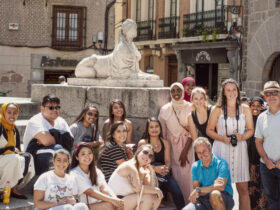What does “whole child schooling” mean to educators? That has been a query we’ve been helping to reply to in view that ASCD launched its whole child initiative more than a decade ago. Recently, it’s gotten more attention (and confusion) with the accelerated attention around social-emotional getting to know. So it’s miles no wonder that EdSurge would submit a research article centering around this query, given the various definitions and perceptions amongst educators.
We’ve seen and heard many definitions of what infant manner. To a few, it references offering nutritious meals or breakfast inside the classroom. To others, it focuses on intellectual health and developmental social and emotional gaining knowledge of capabilities. Others use the term to mean knowledge brain-based studying and adjusting coaching to fit what we now recognize approximately memory, understanding, and meaning. The whole baby can also equate to providing enough counselors in faculties, growing systems for pupil voice and company, encouraging schools to cope with their students’ cultural context, or ensuring fairness and equitable access to opportunities.
To us at ASCD, it is all of these items and greater. While specific understandings of the term want to be addressed, we’re pleased that the point of interest in growing each baby holistically has now emerged as a preferred part of academic communication. We launched our efforts in 2007 at the peak of the No Child Left Behind technology, while some progressive school leaders and districts dared to examine a greater student-focused and extra comprehensive approach in response to NCLB’s slender constraints. In the last 12 years, we’ve witnessed a surge of students, educators, mothers and fathers, schools, businesses, departments of education, and funders speakme about the significance of student achievement past kingdom take a look at ratings.

We released our toddler paintings at a time while, reputedly, all of the conversations centered around the fanciful belief of “adequate yearly development,” or AYP. Our initiative turned into an antidote to the developing fixation with test rankings and a teachers-best approach to schooling. We requested a radically simple query throughout this hard time: If choices about training coverage and practice started by asking what works for the child, how would source—time, space, and human—be arrayed to ensure each infant’s fulfillment? What may we want to obtain if the pupil had been honestly at the center of the system?
We had been searching for an alternative within the communication of approximately what a successful school, a hit pupil, and a powerful schooling machine should be. We sought to move the communique about training “from a focal point on narrowly described academic fulfillment,” as we termed it, “to one which promotes the lengthy-time period development and success of kids.” Well, the verbal exchange has changed. We’ve long passed from No Child Left Behind’s top-down, rigidly authoritarian, and punitive take a look at-based totally model to the Every Student Succeeds Act’s kingdom and locally determined set of multiple measures of pupil fulfillment. We’ve gone from core educational subjects to nicely-rounded schooling. We’ve long passed from depending entirely on standardized testing to degree faculty pleasant to incorporating nonacademic signs into kingdom responsibility systems. We’ve long passed from media saturation about teachers and rankings to knowing that pupil success is more than math and language arts rankings.
We’ve moved the dial from colleges being content delivery systems to colleges being locations of increase, studying, and holistic support. Over the beyond 12 years, we’ve made strides in changing mindsets, passing state and federal resolutions, impacting countrywide and international coverage discussions, and awarding colleges around the united states doing extraordinary work regarding an entire baby approach. Later this 12 months, we can unveil a complete Whole Child Network of faculties that permits colleges to craft their route using a continuum of benchmarks primarily based on our entire toddler technique. Whole Child, as a concept, is turning into mainstream. We are thrilled but not content.
As Rachel Burstein’s article highlights, there’s much to do. We may have helped transfer the broad country attitude about the value and significance of a Whole Child education. However, there may be extra to do regarding definition, context, audience, and actual implementation. We ought to preserve to train teachers and the general public; for instance, at the same time as social-emotional getting to know, school meals and persistent absenteeism are crucial additives that guide the whole child. They are no longer, in and of themselves, an entire baby training. A couple of years ago, we posted A Lexicon for Educating the Whole Child (and Preparing the Whole Adult), which comprehensively addressed the “Tower of Babel” around what whole baby education way. In the coverage short, Roger Weissberg of CASEL summed it up excellent,













